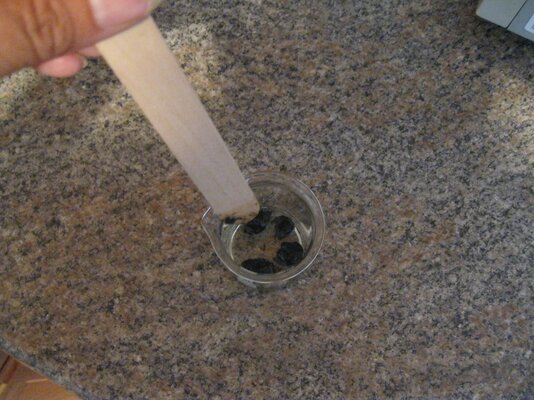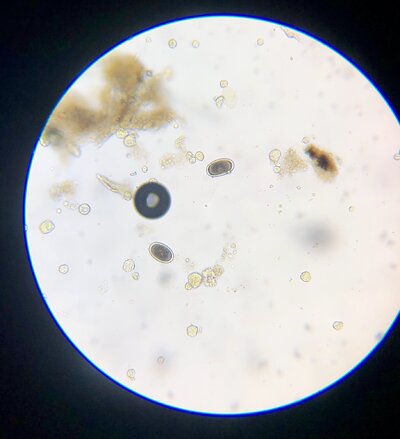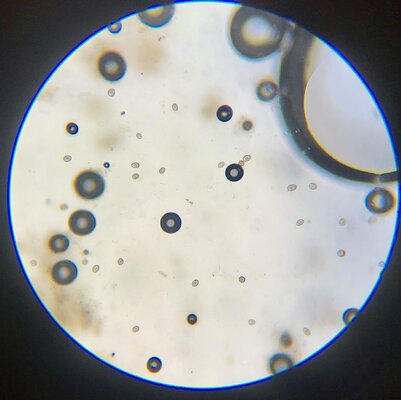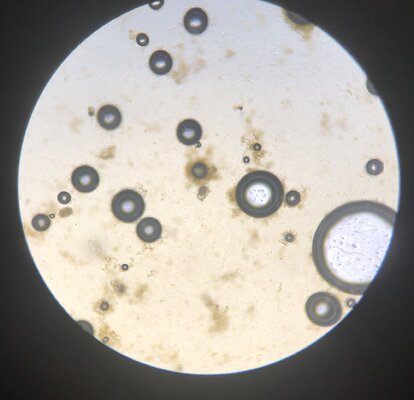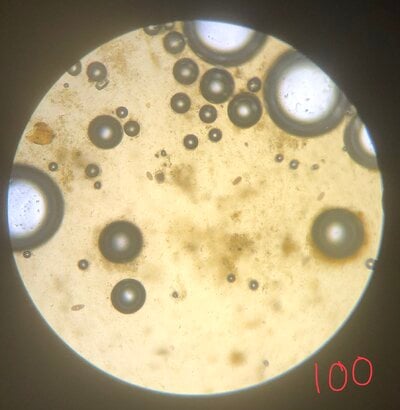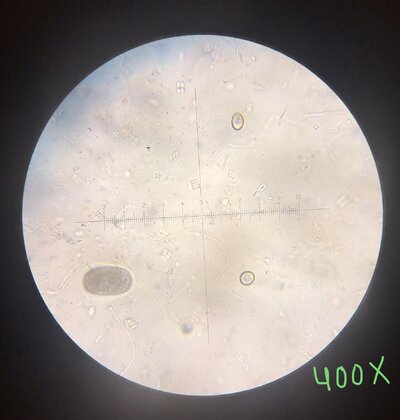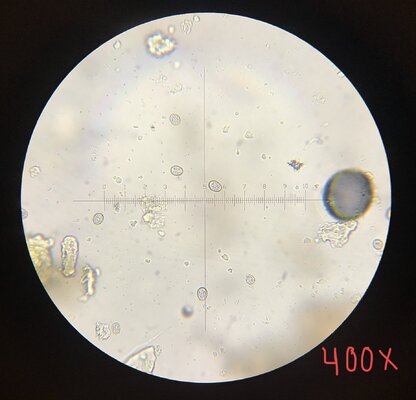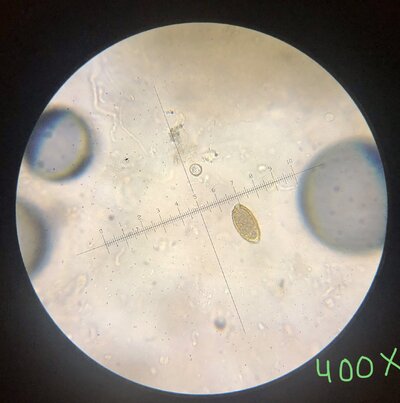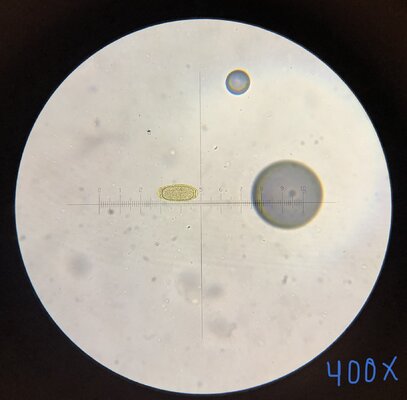When it comes to poultry and intestinal parasites, many people either "guess treat" or they medicate seasonally. The problem with guess treating is that different medications address different parasites (what addresses coccidia will not address capillaria), and that's even IF parasites are the cause of a bird acting sickly. The problem with medicating routinely is that resistance issues can develop; there will typically be some survivor parasites even after medicating. Those strong survivors go on to produce ever stronger, more resistant offspring. So imo, dewormers should be used sparingly, only when actually needed.
Fecal testing allows you to know what specific parasites, if any, are the cause of a bird's ill health.
1. Collect appx. 1 gram fecal sample in a beaker/cup
2. Add approximately 20 ml of sugar float solution

3. Mix the fecal matter thoroughly, creating a slurry – I use craft sticks (hint: when testing multiple samples, I write the animal’s name on each stick)

4. Place a small funnel into your test tube
5. Place half a tea ball strainer into the funnel (any fairly fine straining device could be used, I just find tea balls convenient)

6. Slowly pour the slurry into the strainer – it may not all fit at first, that’s okay

7. Using the craft stick to stir, work as much of the slurry through the strainer and into the test tube as possible. This will take patience, and you will have to lift the funnel as the level in the test tube rises. I
8. Using a dropper, slowly add float solution until a meniscus is barely formed (see pic below).


9. Carefully lay a cover slip on top of the test tube

10. Allow to sit undisturbed for 20-30 minutes
11. Lift the cover slip straight up and place gently in the center of your slide. You are now ready to examine the sample

FLOAT SOLUTIONS
Homemade Sugar Float – mix 454 grams (16 oz) of granulated sugar into 355 grams (12 oz) heated water until clear – refrigerate after cooled.Fecal testing allows you to know what specific parasites, if any, are the cause of a bird's ill health.
1. Collect appx. 1 gram fecal sample in a beaker/cup
2. Add approximately 20 ml of sugar float solution
3. Mix the fecal matter thoroughly, creating a slurry – I use craft sticks (hint: when testing multiple samples, I write the animal’s name on each stick)
4. Place a small funnel into your test tube
5. Place half a tea ball strainer into the funnel (any fairly fine straining device could be used, I just find tea balls convenient)
6. Slowly pour the slurry into the strainer – it may not all fit at first, that’s okay
7. Using the craft stick to stir, work as much of the slurry through the strainer and into the test tube as possible. This will take patience, and you will have to lift the funnel as the level in the test tube rises. I
8. Using a dropper, slowly add float solution until a meniscus is barely formed (see pic below).
9. Carefully lay a cover slip on top of the test tube
10. Allow to sit undisturbed for 20-30 minutes
11. Lift the cover slip straight up and place gently in the center of your slide. You are now ready to examine the sample
FLOAT SOLUTIONS
Commercial Float Solutions are available online
READING THE SLIDE - TIPS
- Choose the 10 objective lens (most scopes come with a 10x optical lens, so this will give 100x total magnification)
- Find a corner of the cover slip through the eyepiece and start there. You will cover the slide (the area beneath the cover slip) using a grid pattern…straight across…find a marker at the top or bottom of your view…move that marker to the top/bottom, and go back straight across in the opposite direction. At 100x it should take at least 10 of these passes to cover the entire slide (at 100x total magnification).
- Use the coarse and then fine focus control to make medium sized/small air bubbles very clear – this is the level at which you’ll look for eggs. I keep a light hand on the fine focus control to slightly adjust as needed as I move.
- Unless a bird has a lot of parasites, most of what you’ll see will be air bubbles, plant matter, pollen, seed heads, etc. Eggs will be symmetrical and smooth for the most part.
PARASITE REFERENCE PICS
Coccidia, 100x, chicken
Three cecal worm eggs and a single capillaria, 100x total mag
Roundworm found on dropping board, and roundworm egg at 160x total magnification
Capillaria eggs, 160x, turkey

